Md Sakib Abrar Hossain
Deep Learning based Automatic Quantification of Urethral Plate Quality using the Plate Objective Scoring Tool (POST)
Sep 28, 2022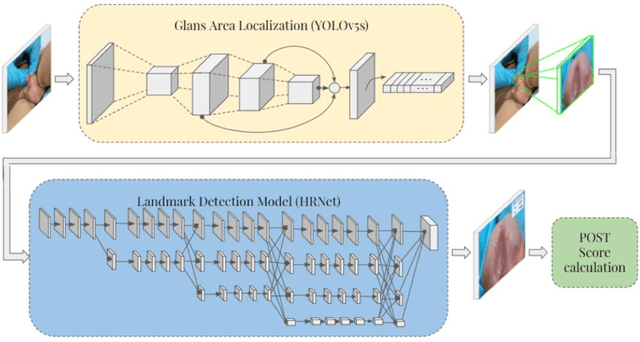
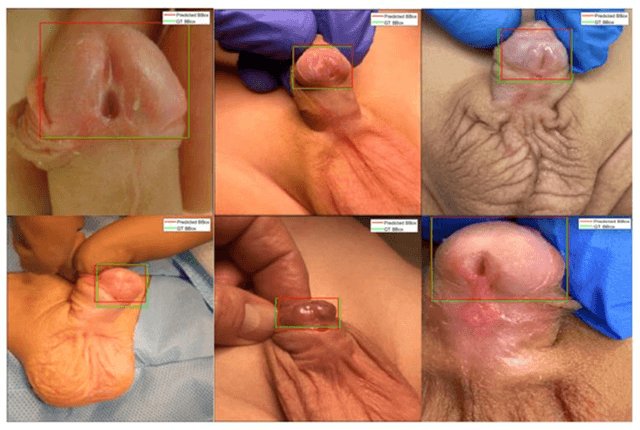
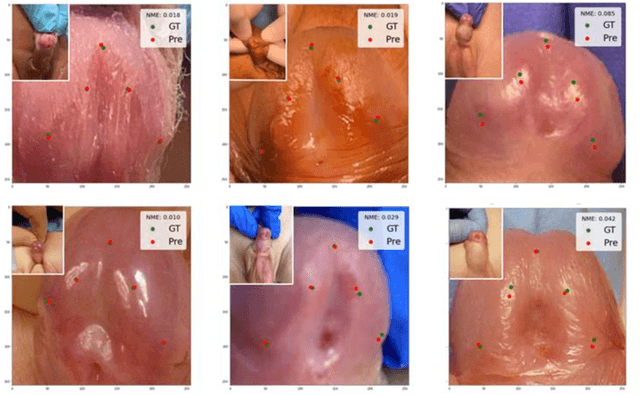
Abstract:Objectives: To explore the capacity of deep learning algorithm to further streamline and optimize urethral plate (UP) quality appraisal on 2D images using the plate objective scoring tool (POST), aiming to increase the objectivity and reproducibility of UP appraisal in hypospadias repair. Methods: The five key POST landmarks were marked by specialists in a 691-image dataset of prepubertal boys undergoing primary hypospadias repair. This dataset was then used to develop and validate a deep learning-based landmark detection model. The proposed framework begins with glans localization and detection, where the input image is cropped using the predicted bounding box. Next, a deep convolutional neural network (CNN) architecture is used to predict the coordinates of the five POST landmarks. These predicted landmarks are then used to assess UP quality in distal hypospadias. Results: The proposed model accurately localized the glans area, with a mean average precision (mAP) of 99.5% and an overall sensitivity of 99.1%. A normalized mean error (NME) of 0.07152 was achieved in predicting the coordinates of the landmarks, with a mean squared error (MSE) of 0.001 and a 20.2% failure rate at a threshold of 0.1 NME. Conclusions: This deep learning application shows robustness and high precision in using POST to appraise UP quality. Further assessment using international multi-centre image-based databases is ongoing. External validation could benefit deep learning algorithms and lead to better assessments, decision-making and predictions for surgical outcomes.
BIO-CXRNET: A Robust Multimodal Stacking Machine Learning Technique for Mortality Risk Prediction of COVID-19 Patients using Chest X-Ray Images and Clinical Data
Jun 15, 2022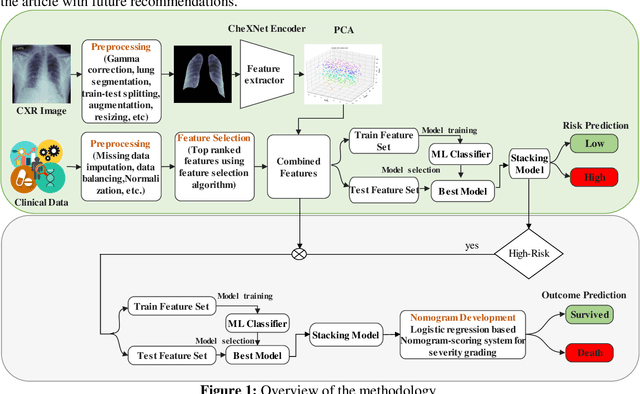
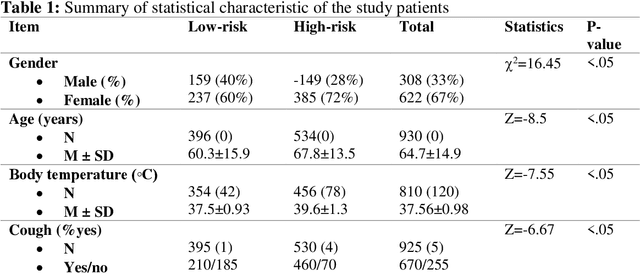
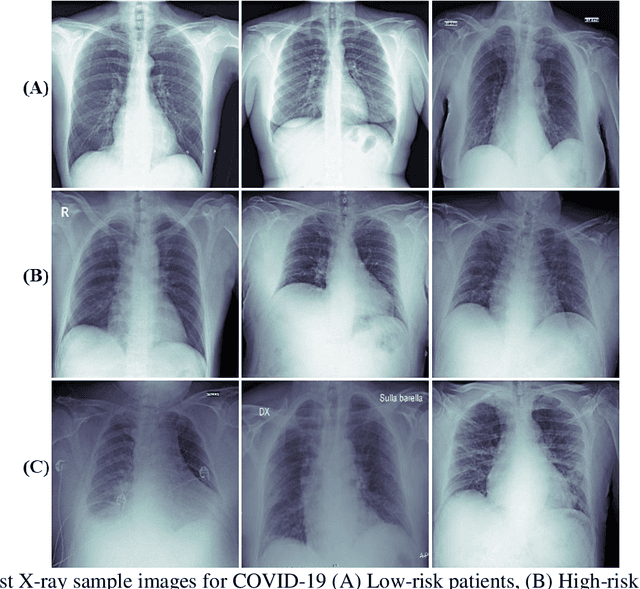

Abstract:Fast and accurate detection of the disease can significantly help in reducing the strain on the healthcare facility of any country to reduce the mortality during any pandemic. The goal of this work is to create a multimodal system using a novel machine learning framework that uses both Chest X-ray (CXR) images and clinical data to predict severity in COVID-19 patients. In addition, the study presents a nomogram-based scoring technique for predicting the likelihood of death in high-risk patients. This study uses 25 biomarkers and CXR images in predicting the risk in 930 COVID-19 patients admitted during the first wave of COVID-19 (March-June 2020) in Italy. The proposed multimodal stacking technique produced the precision, sensitivity, and F1-score, of 89.03%, 90.44%, and 89.03%, respectively to identify low or high-risk patients. This multimodal approach improved the accuracy by 6% in comparison to the CXR image or clinical data alone. Finally, nomogram scoring system using multivariate logistic regression -- was used to stratify the mortality risk among the high-risk patients identified in the first stage. Lactate Dehydrogenase (LDH), O2 percentage, White Blood Cells (WBC) Count, Age, and C-reactive protein (CRP) were identified as useful predictor using random forest feature selection model. Five predictors parameters and a CXR image based nomogram score was developed for quantifying the probability of death and categorizing them into two risk groups: survived (<50%), and death (>=50%), respectively. The multi-modal technique was able to predict the death probability of high-risk patients with an F1 score of 92.88 %. The area under the curves for the development and validation cohorts are 0.981 and 0.939, respectively.
 Add to Chrome
Add to Chrome Add to Firefox
Add to Firefox Add to Edge
Add to Edge